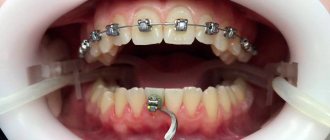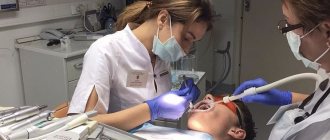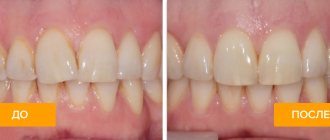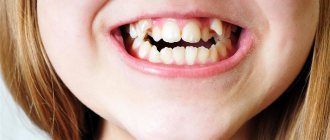If you are reading this article, it means that you are interested in improving your bite and are considering braces.
This shows that you have the determination to achieve a healthy, charming smile.
Here we have collected the questions that people most often write to us in messages.
I hope this changes your life for the better, just like it has changed the lives of thousands of other people.
Can adults get braces to correct their bite?
Anyone can correct a malocclusion, regardless of age. But in an adult, this process takes longer than in children, because skeletal growth has already stopped and hard bones are more difficult to form.
In addition, some oral health conditions may delay the installation of braces. For example, caries, periodontal disease, endocrine diseases.
Sometimes the effect of treatment is influenced by the presence of crowns and bridges. The treatment period starts from 1.5 years.
And then... children's aligners appear on the scene!
With the advent of new digital technologies, the orthodontist discovered the world of transparent orthodontics - a painless, convenient method that allows you to set the correct vector for the development of the child’s dental system. Children's aligners are clear aligners that allow teeth to be moved in early childhood.
The first breakthrough in treating children without braces was made by Invisalign. Check out their advertising slogan below - it compares aligners with wireless communication ( Go wireless
), and in context - wireless technology, which we always associate with the braces system (there are also braces and the wire connecting them). The absence of wires and heavy braces on a child’s teeth eliminates many obstacles, inconveniences and removes restrictions on nutrition and hygiene:
The technology of treatment with aligners for children is to align baby (temporary) teeth and also promote the proper growth of permanent teeth. “Children’s aligner, mouthguard – what is it?”, you ask, what is the difference from a plate, what is better to choose? And why don’t all orthodontists offer this type of treatment?
The answer, dear friends, is obvious; this type of dentition correction is a breakthrough for 2022. If previously we had the opportunity to treat adults using aligners, now - hurray! and thank you very much! manufacturers - Invisalign, Star Smile, Flexilainer - for providing the opportunity to correct the bite in children with the help of aligners.
What do children's aligners do as opposed to plates?
Unlike dental plates, bite alignment with aligners in children allows teeth to move in all planes in the same way as with aligners for permanent dentition in adults.
The initially specified correct vector of tooth movement in the aligner treatment technology makes it possible to straighten both the child’s already erupted teeth and those just beginning to erupt.
Thus, aligners for children contribute to the proper growth of permanent teeth.
Early treatment
. Treatment with aligners can begin from the age of 5 while still in the primary dentition. At this age, malocclusion in children is corrected quickly.
Aligners do not damage the enamel, and there are no dietary restrictions when wearing them. On the contrary, it is recommended to eat hard, wholesome foods (among them carrots, apples, cucumbers) in order to train the chewing muscles.
The treatment goes unnoticed by others, the child feels comfortable, they are easily removed and are not noticeable in the mouth
.
He won't be teased
, since the aligners are invisible when you talk or smile.
Alignment aligners are safer
, they are smooth, fit tightly to the teeth, the tongue does not catch on the children's aligner, and speech defects are less pronounced than with other orthodontic systems.
With children's aligners, there is no need to worry about food getting stuck in the aligner.
or hard parts of food will damage the aligners.
The child can brush his teeth and eat as usual: removable aligners do not interfere with hygiene
.
It is much easier for a child to care for aligners than for braces - no special brushes
. For care, simply rinse the aligners with warm water and a special solution or simply brush with a regular toothbrush.
Control of tooth movement on children's aligners
Using a special computer program, the doctor demonstrates the results of orthodontic treatment BEFORE it begins. In 3D format, the child and his parents will see how and in what time frame the teeth will move (a colorful cartoon).
All manufacturers have their own computer programs for 3D visualization of the final result of bite correction in children: Invisalign has the CleanCheck
, Star Smile has a virtual 3D setup, FlexiLigner has the OrthoCheck program.
At each stage of treatment there is a unique opportunity to carry out additional correction according to clinical need, for example: loss of a baby tooth, or premature eruption outside the dentition.
Visit to the doctor
. With early correction of primary occlusion using aligners, visits to the orthodontist are not frequent, once every 1.5-2 months is sufficient. A repeated visit to the doctor does not take much time; basically, the doctor gives the patient sets of aligners and takes photographs during the treatment phase. The appointment takes no more than 15-20 minutes.
Children need to wear aligners constantly, day and night, and remove them only when eating or brushing their teeth. Which is very simple, convenient and very comfortable even for the smallest children.
Does teeth straightening hurt?
The installation of braces itself is painless, but requires patience because it takes about an hour.
For 7-10 days, teeth may hurt when biting. The body must get used to foreign objects. In general, you live your old life, you just notice pleasant changes in yourself.
Control visits are needed to correct the process and form the correct position of the teeth. Usually after changing the arch the pain goes away within 3-7 days. It all depends on individual sensitivity.
For some, wearing braces is only unpleasant, for others, on the contrary, it is painful, and some do not feel anything.
Can braces not help?
Wearing the system gives excellent results. If the dental units begin to diverge again, it means the patient did something wrong. Perhaps the doctor made mistakes at the diagnostic stage.
After therapy, wearing retainers (guards) is indicated. If this is not done, the incisors, canines and molars will quickly return to their previous position.
An important factor is the experience and professionalism of the orthodontist. If there is no positive effect, it is better to change the treating specialist. There are other reasons:
- unsuitable arc type;
- anatomical features of the structure of teeth;
- insufficient period of intervention.
What to do if braces don't help
Having discovered that wearing the structure turned out to be ineffective, you must first understand why this happened. When the system is dismantled, and the patient does not wear retainers (mouthguards) due to damage, loss, or does not even know that this should have been done, it is worth contacting the treating orthodontist. He will select the appropriate accessory. However, this applies to cases when no more than 2-3 days have passed since the removal of the structure. If a longer period has passed, the staples are reinstalled. The re-treatment will take less time than the first time, but it will last until the rows are aligned again.
If the doctor’s qualifications are weak, it is better to turn to another. Tactics depend on the factors that led to the problem.
Do braces make it difficult to eat?
Once installed, you will need to learn how to eat in them. This period takes on average 3-7 days.
At this time, give preference to soft and liquid foods. Cut fruits and vegetables into small pieces. Avoid fibrous and sticky foods.
Over time, you will be able to eat almost everything except Coca-Cola (can dissolve glue), hard foods (nuts, crackers, chocolate) and sticky sweets (chocolate, cookies or caramel bars). You should also not chew gum.
Question answer
Is it always possible to use braces to move teeth to the place where they were removed?
If one tooth is missing, you can do without implantation. But usually this is only possible if there is a shortage of chewing units (provided there is sufficient bone tissue). They differ little in function and form. If there are missing front teeth, implantation will be required. Frontal units vary in size and shape; their displacement will cause an aesthetic defect in the smile area.
Levin Dmitry Valerievich
Maxillofacial surgeon, chief physician of the Center
How often should inspections be carried out?
Every 1-2 months, it all depends on the defect and the individual structure of the patient’s teeth. During the visit, the orthodontist checks the success of the treatment and sets a vector for the arch, which determines the movement of teeth in the right direction.
Missing follow-up visits may negate the effect of previous treatment. You are also required to visit a hygienist every six months.
Braces, whether external or internal, need to be worn for an average of 1.5 years. But determining more precise timing depends on the initial situation and age of the patient. Sometimes it takes 2 years to eliminate a defect.
Partial braces for the lower jaw: indications and recommendations
If bite defects are minor, then partial correction is acceptable. Indications for installing braces on the lower jaw:
- Crowding of the front teeth - incisors and canines.
- Slight curvature of one or more teeth.
- Diastema between the incisors with proper closure of the chewing teeth.
Doctors allow local correction of the lower row in the absence of serious bite pathologies and symmetrical position of the jaws in adolescents.
Also, a partial “4+2” brace system is often installed on the lower jaw. This is practically the only case when braces are installed for children 7-9 years old. The purpose of the orthodontic design is to quickly straighten the front permanent teeth at the time of bite change. These braces are attached to 6 points - to 4 incisors and to the last two chewing units. Treatment is carried out according to indications - after a thorough diagnosis of the bite by an orthodontist.
Dolotova Marina
In order to be able to place braces only on the lower jaw, a couple of conditions must coincide. The first is the insignificance of the anomaly. Often this is the curvature of one or two teeth. The second is initially correct occlusion, symmetrical closure. That's great rarity. In other cases, treatment is carried out in combination.
What to do if the bracket comes off?
In itself, this happens quite rarely, only in cases of severe crowding of teeth, since the arch puts a lot of pressure on the dentition and the lock falls off. Another option is if the patient is a nut or other solid food lover.
If you find a broken bracket, contact your orthodontist immediately. Otherwise, the teeth will begin to gradually move to their original position. Also remove elastic bands if you wear them.
The doctor sees patients with unstuck braces out of turn. It takes about 5 minutes to glue a new lock.
It also happens that the archwire flies out of the bracket grooves. You can try to get it back yourself. However, this should be done extremely carefully, without damaging the adjacent locks.
Under what conditions are braces used? are they used locally?
Partial braces are indicated for use in certain dental conditions. Namely, the closure of the molars must be correct, as well as the placement of the canines. Such ideal condition of the dentition is very rarely observed. Therefore, most often orthodontists use braces for the entire dentition for correction. However, partial use of braces is possible for the following pathologies:
- Noticeable interdental spaces;
- Incorrect tooth inclination;
- The tooth protrudes from the dentition;
- Incorrect rotation of the tooth;
- Slight curvature that disrupts the dentition.
All this can only be noticed with a certain dental examination, which involves visual and manual examination of the oral cavity, taking impressions, and then making models of the dentition from plaster. An x-ray and possibly a computed tomography scan are also needed to give an idea of the condition of the teeth and jaws. Only after diagnostic procedures can you confidently select one or another braces system.
How to brush your teeth with braces?
This is where a traditional toothbrush and toothpaste don't serve their purpose. Therefore, you will need to buy a special orthodontic brush, brushes and floss from the pharmacy. You can also use an oral irrigator if you wish.
This way you can effectively clean your teeth and the area around the locks. Teeth should be thoroughly brushed after each meal, because food debris is deposited on braces, which contributes to the development of caries and does not look aesthetically pleasing. We have repeatedly encountered patients whose teeth are more well-groomed than those of a person without braces.
Removable braces: pros and cons
Removable mouthguards, trainers or plates have a number of advantages, namely:
- due to the tight fit to the teeth and the transparency of the material used, they become invisible to others;
- quick adaptation and absence of discomfort;
- easy hygiene procedures (mouth guards can be easily removed and put on independently);
- the possibility of wearing the structure to school-age patients, which allows the procedure for correcting the bite to be carried out at the stage of its formation;
- are worn 11–15 hours a day, which makes it possible to go out into public places without wearing plates;
- makes it possible to wean a child from bad habits that can affect the formation of malocclusion;
- well suited for children who refuse to walk with fixed structures;
- specially inserted screws into the plates allow you to slowly and painlessly expand the jaw bones;
- help to consolidate the result obtained after correcting malocclusions with non-removable braces, protecting the teeth from returning to their original location.
The disadvantage of removable systems is the impossibility of treating bite pathologies with large deviations. Treatment with these types of orthodontic structures is not limited to the age category of the patient, but is more often used to correct pathologies in children.
Are braces the last stage of orthodontic treatment?
After removing braces, you need to consolidate the effect of straightening your teeth. For this purpose, retainers are made that will protect teeth from returning to their original place.
There are two types of retainers:
- Removable – transparent, plastic mouth guards. Used only at night or during a certain period.
- Non-removable - made of metal. They are installed on the back surface of the teeth using special composite materials.
The decision on the best method is made by the orthodontist. The aligners must be worn at all times during the first month, removed only for eating and brushing your teeth. On average they are worn for 2 years.
While wearing retention devices, you must visit a doctor every 3-6 months.
Types of bracket systems
Installation principle systems are defined as:
- vestibular - the classic form of the device, attached to the outer part, visible,
- lingual - fastening on the internal (lingual) part, not accessible to view from the outside.
The designs are: ligature - the use of elastic bands, replaced with elastic ones as the bite is straightened, and modern non-ligature instruments.
Note! Lingual differs from vestibular not only in the high cost of maintenance, but also not in ease of wearing: a foreign body installed on the inside often wants to be explored with the tongue, which causes injury and affects diction. In addition, an “invisible” device is more difficult to care for.
When choosing a lingual system, you can install braces only from all-metal material; for vestibular installation, there is a wide selection of types of brackets.
Metal braces are standard steel components and a steel ligature, which in the new design have been reduced in size, reducing the inconvenience caused to the user.
Advantages:
- ease of use,
- comfortable care when wearing,
- low price,
- efficiency,
- In the case of ligatures, children and adolescents can choose the color of the rubber bands to determine their individuality.
Flaws:
- noticeable.
Plastic
Plastic braces are designed to correct minor irregularities, as they do not have sufficient strength and cannot affect severe irregularities and curvatures.
Advantages:
- unusual design,
- They are made transparent, making them practically invisible.
Flaws:
- turn yellow and wear out,
- do not have a strong impact, increasing the time period.
Ceramic system
Ceramic braces - made of ceramics matched to the enamel tone to reduce visibility.
Advantages:
- aesthetics,
- By choosing a ceramic tone that is a shade lighter than natural enamel, you get a whitening effect.
Flaws:
- are more expensive
- more time is spent on care.
Sapphire braces
The sapphire braces system is characterized by being made from artificially grown sapphires, which, due to the refraction of light, become transparent on a dazzling smile.
Advantages: not visible to outsiders.
Flaws:
- impressive price,
- exclusion of any products that can damage the components (nuts, snacks, hard vegetables and fruits).
Titanium
Titanium braces are a metal type, the main material of which the device is made is titanium.
Advantages:
- hypoallergenic,
- strong and durable, suitable for changing “neglected” cases.
Disadvantages: noticeable to prying eyes.
The dentist may suggest installing a combined design of braces: ceramics on the front ones, and a classic prefabricated metal bracket system on the “invisible” rear ones.
How does this happen?
You need to start working on correcting the curvature with an individual consultation with a specialist. During the appointment, the doctor assesses the condition of the oral cavity through examination, x-rays, taking impressions, and selects the best braces to correct the situation.
The most informative is a 3D image of the cavity, offered by most modern reputable clinics. This diagnostic method will be more expensive, but it is the most accurate for determining the scope of work.
Next comes oral debridement:
- detection of caries disease,
- treatment of caries in fact,
- thorough hygienic cleaning,
- in the absence of support for fixation, the issue of future implantation is decided.
Installation of braces (one row per visit) lasts about 2 hours, depending on the complexity of the case: the specialist prepares the surface, installs the bracket and attaches the arch to them. The procedure is absolutely painless.
Correction is necessary every 1-1.5 months until the problem is completely eliminated:
- metal - 1-2 years,
- ceramic and sapphire - up to two years,
- lingual - 1-2 years.
Removing braces involves opening the “locks” of the system, removing the thick fishing line and removing the “squares” with special tweezers. Next, the doctor will install a retainer (steel wire) on the inner surface of the teeth, or offer a transparent plastic tray to secure the achieved result. The retention device will remain with the patient for at least a year. After removal, the doctor polishes the enamel and coats it with fluoride (varnish or paste).
What is the price
The answer to the question of how much braces cost can only be given by determining the factors that influence the cost:
- The degree of complexity of the initial problems, the number of crooked teeth,
- the straightening method chosen by the patient (metal is cheaper than sapphire and ceramics, internal is more expensive than external),
- material of components,
- availability and preparedness (a template version may be suitable for the user, or custom-made may be necessary),
- brand (domestic or foreign)
- the need for preparatory work (getting rid of carious stains, pulpitis, placing a temporary crown).
Don’t forget about a monthly visit to the orthodontist for arch correction and oral hygiene. The final cost is the sum of the drawn up treatment plan and is necessarily specified in the contract or agreement, as well as the method of payment (immediately or in installments).
On average, taking into account all factors, the average price for titanium devices is from 80 to 150 thousand rubles per jaw, sapphire ones will cost from 100 to 250. Lingual brace - up to 300 thousand rubles.
The choice of suitable structures depends on the knowledge and skills of the orthodontist, patient reviews, and before and after photos.
You should not skimp on your bite when the bones of the jaw and skull are involved, affecting the overall health of a person. Choose professional dentistry carefully and do not chase promotions and unprecedented prices.
Can you continue to live with crooked teeth?
Crooked teeth are more vulnerable to tooth decay and periodontal disease. If teeth grow incorrectly, their surfaces become excessively worn down when eating, which worsens the malocclusion. Therefore, sometimes it leads to serious diseases of the temporomandibular joints.
In addition, if you suffer from frequent headaches, chondrosis, or have tinnitus, it is better to check your bite.
Consider treatment with Botox injections
In severe cases, botulinum toxin injections into the masticatory muscles can be used to reduce the manifestations of bruxism. After administration of the drug, the muscles partially relax and the spasm is relieved. This is followed by relief from headaches, toothaches and other unpleasant symptoms. Botulinum toxin lasts up to 6–8 months, then the muscles regain sensitivity and the ability to contract. This should be enough time to stop grinding your teeth.
There is no way to get rid of bruxism once and for all. But with an integrated approach, you can get a good result: reducing the load on the temporomandibular joints, restoring enamel, and improving the quality of sleep.
Braces hurt the oral cavity, what should I do?
After installing braces, each patient receives wax for locks from the orthodontist. At the very beginning, it is worth applying it to the entire system, because the mucous membrane in the oral cavity is not yet accustomed to contact with foreign objects.
Abrasions and wounds heal very quickly. Their healing can be accelerated by using agents that promote the healing of wounds in the oral cavity.
Clinical situations
If orthodontic treatment is required
If a patient is missing one tooth and requires orthodontic correction of the dentition, it is better to opt for braces - this way the teeth will be in the correct position and at the same time the space will be closed. No surgical intervention is required, there are no contraindications and there is less risk to health.
But this option is suitable if one of the distant teeth is missing. If there is a lack of anterior or several dental units, implantation is indispensable. Before installing implants, braces are first put on. To maintain space for the titanium root, a spring is attached to the adjacent teeth, holding them at the desired distance. An artificial root can also be inserted during orthodontic treatment - during the period of wearing braces, the implant will take root.
If the dentition is straight
If the dentition is straight or has already been treated with braces, it is better to install an implant, since the teeth are already in the correct positions. This treatment will require surgery, but will be faster than wearing braces. If implantation is not possible for any reason, repeated orthodontic treatment is carried out.
Despite the patient’s wishes, the final decision on whether to pull out a tooth with braces or place an implant remains with the doctor.











